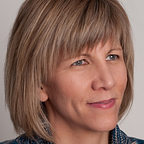Preventing Non-Communicable Diseases: How might we tap into the power of people and their communities?
Meet Mama Jane
Jane lives with her grandchildren. She has high blood pressure which she manages with a healthy diet and medications.
Meet Cossey
Cossey is also a grandmother and a community volunteer. She visits Jane to monitor her blood pressure. Sometimes Jane has challenges given her difficulty walking and limited income getting to the hospital to pick up her medications. When this happens, Cossey will mobilize money from the Older Persons Group to pay for a boda-boda motorcycle taxi to take Jane to the hospital.
There are alarming rates of increasing hypertension and diabetes in lower-income countries
Noncommunicable diseases like heart disease, cancer, and diabetes are responsible for almost 70% of all deaths worldwide. Three out of four of these deaths occur in low- and middle-income countries.
In addition, health systems in lower-income countries have been primarily organized around communicable diseases such as malaria and HIV and are not prepared for this increasing double burden of noncommunicable disease.
Ageing is associated with an increased risk of having more than one chronic medical condition. There is going to be a significant increase in people over the age of 60 in lower-income countries.
Many older people in Uganda are isolated or lack resources to care for themselves. Family members may also lack the knowledge to provide care and support.
But there is hope! How might we tap into the power of people and their communities to prevent non-communicable diseases?
Meet Rehema
Like the other grandmothers, Rehema is responsible for the daily needs of her grandchildren. If her diabetes or blood pressure are not well controlled it affects her whole family. Rehema works with the Older Persons Group to not only manage her health but also improve the health of her family and community.
Rehema has a dream for an intergenerational school she calls “Pamoja” which means together in Swahili, where elders can support young people who have not been able to continue their secondary school education to learn how to make and market traditional crafts.
Meet Christine
Christine is a 73-year-old retired nurse. She loves older people and works tirelessly to take care of them. She is proud to serve the people she has grown up with. She visits the homes of elders and takes their blood pressure. If it is high, she gives them a referral form and sends them to the hospital. Her dream is to continue serving for the rest of her life.
And Rehema and Christine are not alone. They are part of Older Persons Groups in their communities.
In partnership with other generations, health workers, civil society, and local leaders, older people from these groups have come together to co-design solutions to improve health.
Older persons and their partners have begun taking actions in four areas to prevent and manage these health conditions including:
- Improving nutrition
- Increasing physical exercise
- Improving sanitation
- Promoting regular health check-ups
This year, older persons and health providers came together to develop solutions on how to strengthen collaboration between the community and the health system. As a result, they are working on increasing awareness about non-communicable diseases in the community, working together to coordinate community outreaches and clinic visits, supporting family caregivers, and increasing access to resources and transportation to the health clinic.
There is an opportunity to test these local solutions for health promotion developed by communities to influence policies and scale solutions nationally. Local solutions like these address constraints and engage strengths in the community to solve problems.
Older people are an untapped resource offering skills and leadership in addressing community issues.
Imagine if all the grandmothers like Cossey, Rehema, and Christine came together in their communities, what might be possible?
By engaging the strengths of older people in partnership with the health system and other stakeholders, we can work together to prevent the rise of noncommunicable diseases in lower-income countries.
More resources
Christine’s story — https://www.wevideo.com/view/1270490589
Dancing Jajas — https://vimeo.com/264629504
